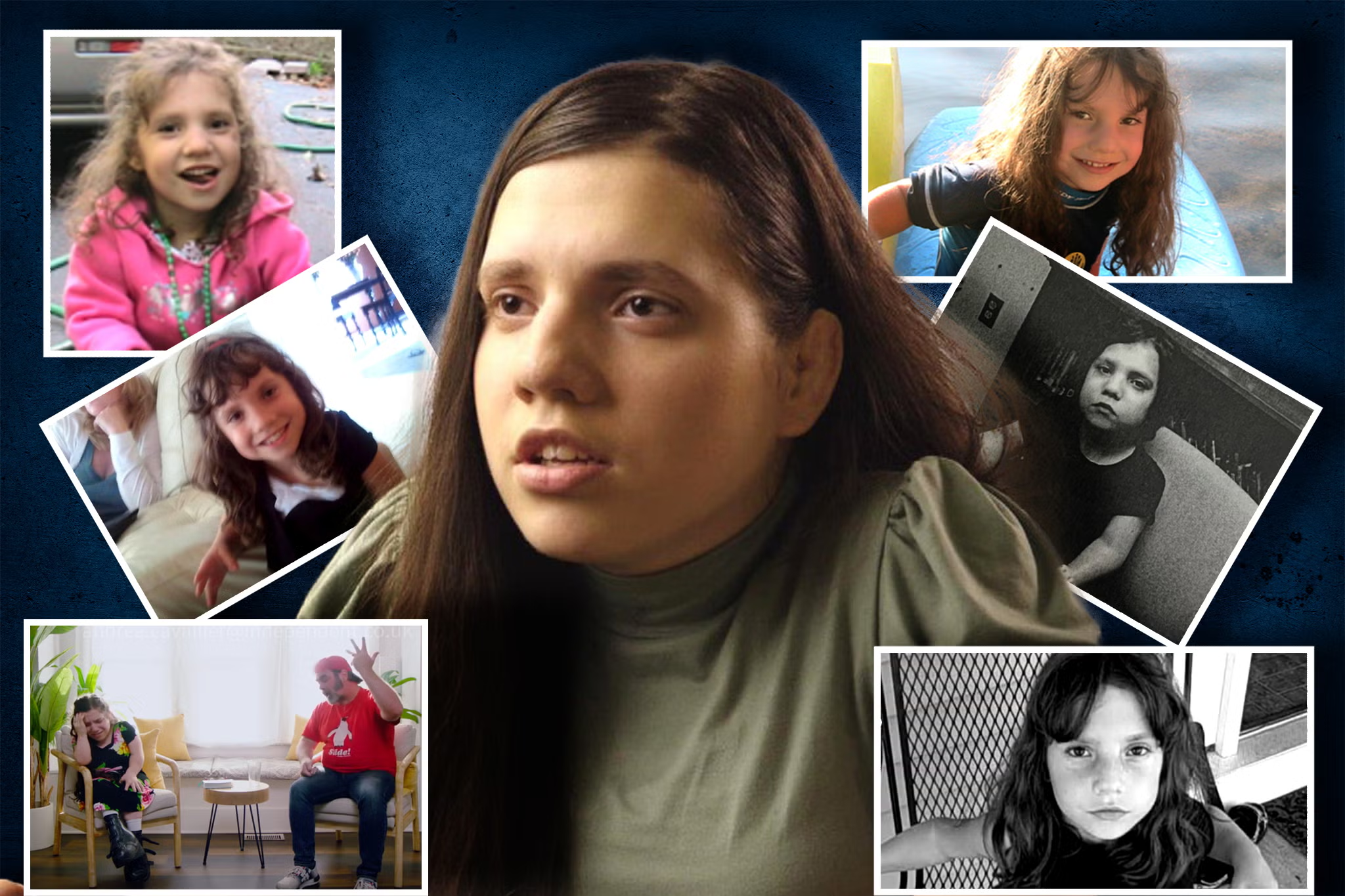Natalia Grace: A Comprehensive Biography and Overview
Natalia Grace, a name that has recently gained considerable attention, is a Ukrainian-born woman whose life story has sparked intense media attention, controversy, and public debate. Her journey involves accusations, mysteries, and a complex case that has kept people questioning her true identity. In this comprehensive biography, we will explore her early life, the series of events that made her a subject of national and international media coverage, the controversies surrounding her story, and the impact of her case on societal perspectives regarding adoption and medical conditions.
Early Life and Family Background
Natalia Grace was born on September 4, 2003, in Ukraine, where she spent the early years of her life before being adopted by an American couple. While much about her early life remains shrouded in mystery, it is known that she was born in Ukraine, and her origins have been a key subject of debate as her story unfolded.
Natalia’s parents, Michael and Christine Barnett, adopted her in 2008 when she was around 6 years old. The family was initially introduced to Natalia when she was placed into the adoption system due to her difficult and troubled circumstances in her home country. The Barnetts, who already had three biological children, were told that Natalia had a medical condition that had left her with the appearance of a child despite being older. Her adoption was part of their desire to expand their family and help a child in need.
However, as time went on, things began to unravel, leading to a situation that would grab the world’s attention.
The Barnett Family and the Adoption
The Barnett family, especially Michael and Christine, were portrayed as loving parents who sought to provide Natalia with a better life. Initially, the adoption process was successful, and Natalia seemed to be adjusting well to her new life in Indiana, USA. She was enrolled in school, and the family had high hopes for her future. However, things began to take a dark turn.
Reports from the Barnetts indicated that Natalia’s behavior started to raise suspicions. Her emotional maturity and actions were sometimes inconsistent with what one would expect from a child of her age. Additionally, Natalia’s appearance continued to defy the expected norms for her age, causing further concerns.
The Controversy: Is Natalia Really a Child?
One of the most controversial aspects of Natalia Grace’s story centers on the question of her true age. When she was adopted by the Barnett family, Natalia was reportedly told to be a young child, about six years old. However, suspicions soon began to grow that Natalia might not be as young as she appeared.
In 2010, a court-ordered medical evaluation confirmed that Natalia may actually be closer to 16 years old, not 6. According to doctors and experts involved in the evaluation, Natalia’s bone density and other physical markers indicated that she was likely much older than her parents had been told. This revelation set off a chain of events that would lead to a legal battle, media frenzy, and widespread public debate.
At the center of the controversy was the question of whether Natalia was a victim of fraud, a child with a medical condition, or an adult posing as a child for ulterior motives. Her story blurred the lines between reality and fiction, sparking heated discussions about the ethics of adoption, medical diagnoses, and parental responsibilities.
The Barnett Family’s Allegations and Legal Battles
As the story unfolded, the Barnett family’s actions became more and more complex. In 2012, after the revelation of Natalia’s age, Michael and Christine Barnett made the decision to move out of the home and leave Natalia behind. They claimed that they were no longer able to care for her and that she was not a child at all, but rather an adult posing as a child, and that she had been manipulating them for years.
In 2013, the Barnetts filed a police report alleging that Natalia had attempted to harm them, leading to the authorities’ involvement. However, the story took another turn when Natalia filed a legal complaint of her own, stating that she had been abandoned and that her adoptive parents had abandoned her without providing proper care or support.
The case eventually took a legal turn in 2019 when Michael and Christine Barnett were charged with neglecting their adopted daughter. The charges stemmed from their decision to move out of the home and leave Natalia behind after determining that she was not the child they believed her to be. The Barnetts defended their actions, claiming that they were not obligated to care for an adult who had deceived them.
The case captured national and international media attention and sparked debates about adoption, medical diagnoses, and what constitutes neglect and abuse. The controversy surrounding the case remains unresolved, with both sides presenting conflicting arguments about what truly happened.
Natalia’s Own Story and Public Perception
Natalia Grace herself has spoken out about her experiences. She maintains that she is, in fact, a child and that her medical condition led to the confusion regarding her true age. She claimed that she suffered from a rare form of dwarfism and that her body’s physical characteristics contributed to her appearance as a much younger child, despite being an older teen at the time of adoption.
Natalia’s side of the story portrays her as a victim of an unfit adoption situation, where she was subjected to mistreatment and neglect. She emphasizes that her medical condition was misunderstood by her adoptive parents and that they made hasty decisions based on misinterpretations of her physical appearance and age.
While her account presents a different narrative, there are still many questions left unanswered about her true identity and the actions of all parties involved. The public perception of Natalia has been mixed, with some sympathizing with her situation, while others remain skeptical of her claims.
The Role of Medical Conditions in the Case
A major factor in Natalia’s story is the medical condition that may have played a role in the confusion surrounding her age. Medical experts have suggested that Natalia’s condition, which likely involves a form of skeletal dysplasia or dwarfism, might explain her youthful appearance despite being older than she appeared.
These conditions affect bone growth and may result in delayed physical development, leading to confusion in situations where accurate age assessments are critical. In Natalia’s case, her condition may have caused her to appear far younger than she actually was, which led to misunderstandings among those who were tasked with caring for her.
Medical diagnoses and conditions like these can have profound effects on people’s lives, especially when they lead to false assumptions and mistreatment. In Natalia’s case, the lack of clarity surrounding her true age has had significant consequences, impacting her life and future opportunities.
The Impact of the Case on Adoption and Society
Natalia’s case has had a broader societal impact, especially in terms of adoption and child welfare. The case has highlighted potential vulnerabilities in the adoption process and has raised questions about how accurately children’s ages and medical conditions are assessed before being placed into homes.
Adoptive parents are tasked with taking on great responsibility, and in cases like Natalia’s, where there is confusion about age and health conditions, it can be challenging for them to make the right decisions. The case has ignited debates on how adoptive families should handle children with medical issues and what role medical experts should play in assessing the conditions of children before adoption.
Additionally, the case has led to a wider conversation about age manipulation and identity. Many have questioned whether adults might pose as children for personal gain, and how society can better protect vulnerable children in such situations.
Legal Repercussions and Future Outlook
As of now, Natalia Grace’s case is still unresolved. The Barnetts have faced legal charges for their role in her abandonment, but the outcomes of the case remain uncertain. Natalia, on the other hand, has faced challenges in securing a stable life after the events.
She has worked to move forward, speaking out about her experiences and seeking a better future. Given the complexity of the case, the legal, social, and psychological implications continue to have long-lasting effects on everyone involved.
Conclusion
Natalia Grace’s story is one of complexity, uncertainty, and a series of controversial decisions made by both her adoptive parents and the medical professionals involved. It raises questions about the ethics of adoption, the role of medical diagnoses in determining age, and the responsibilities of adoptive parents.
While Natalia’s true age and identity remain unclear, her story has sparked significant conversation about adoption practices, medical conditions, and the treatment of vulnerable children. As the legal battle continues, Natalia’s case serves as a poignant reminder of the importance of accurate information, compassion, and care in the process of adoption and child welfare.
Ultimately, Natalia’s story reflects the need for greater understanding, transparency, and support for all children, especially those with medical conditions, to ensure that they are given the best opportunities for a safe, loving, and fulfilling life.






